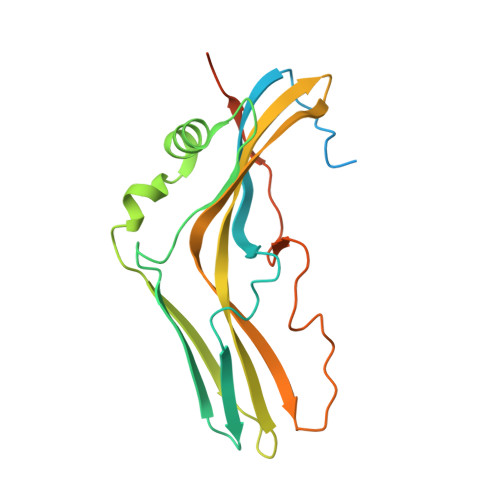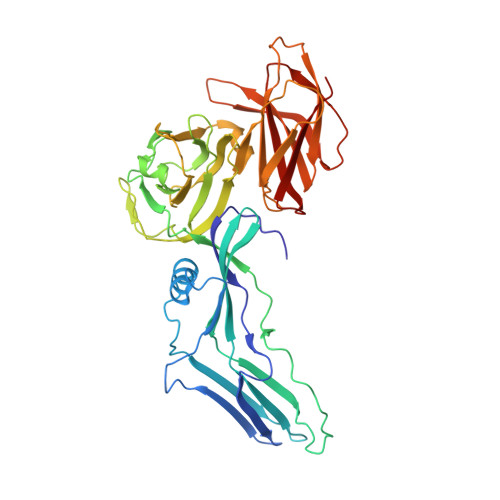Carbohydrate recognition mechanism of HA70 from Clostridium botulinum deduced from X-ray structures in complexes with sialylated oligosaccharides
Yamashita, S., Yoshida, H., Uchiyama, N., Nakakita, Y., Nakakita, S., Tonozuka, T., Oguma, K., Nishikawa, A., Kamitori, S.(2012) FEBS Lett 586: 2404-2410
- PubMed: 22684008
- DOI: https://doi.org/10.1016/j.febslet.2012.05.055
- Primary Citation of Related Structures:
4EN6, 4EN7, 4EN8, 4EN9 - PubMed Abstract:
Clostridium botulinum produces the botulinum neurotoxin, forming a large complex as progenitor toxins in association with non-toxic non-hemagglutinin and/or several different hemagglutinin (HA) subcomponents, HA33, HA17 and HA70, which bind to carbohydrate of glycoproteins from epithelial cells in the infection process. To elucidate the carbohydrate recognition mechanism of HA70, X-ray structures of HA70 from type C toxin (HA70/C) in complexes with sialylated oligosaccharides were determined, and a binding assay by the glycoconjugate microarray was performed. These results suggested that HA70/C can recognize both α2-3- and α2-6-sialylated oligosaccharides, and that it has a higher affinity for α2-3-sialylated oligosaccharides.
- Life Science Research Center and Faculty of Medicine, Kagawa University, 1750-1 Ikenobe, Kita-gun, Kagawa 761-0793, Japan.
Organizational Affiliation:




















